By all means snapping turtles should be handled with utmost care.
Usually shy, they become aggressive when approached and attempted to be handled. Biting,
snappers can reach far back, as far as about half of the carapace all the way back across it.
Their jaws are are very powerful, fast, and once they manage to get hold of something, they usually don't
let go very easily ( in the case of being bitten - if you still have your finger - the best option is to put the turtle back in the water,
where it might just decide to escape and leave you alone ). Just for the record, a 6 inches long
snapper can easily deliver a skin lacerating bite. An adult large snapper will take your finger or two...
So, how to handle them ?
Hatchlings - basically any way you want. Remember though - while most of them are pretty tame at that stage,
some show signs of aggression even when this young. Handle them with coution.
They grow very fast and might start biting pretty soon !
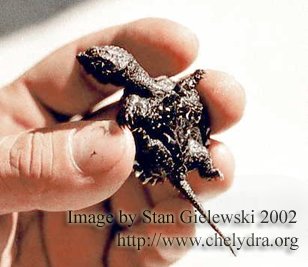
When small, a snapper can be easily picked up with one hand. Grab the turtles carapace with your thumb and
the plastron with your index and middle fingerswhile, keping the tail between them.
Middle size snappers is much easier to manipulate using all of your fingers, in the same manner
and trying to keep its tail between the middle and third finger.
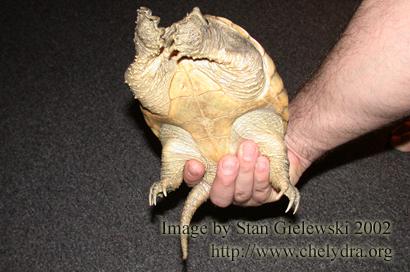 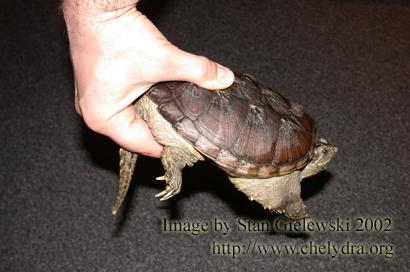
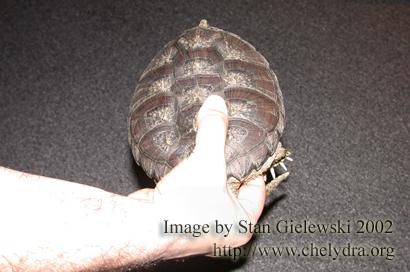
Due to its weight and power, large snappers should be handled only by experienced people.
The manner would be simmilar, except for grabbing the turtle with both hands with the tail between.
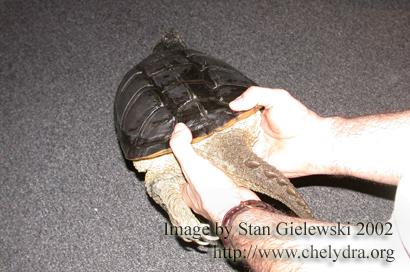 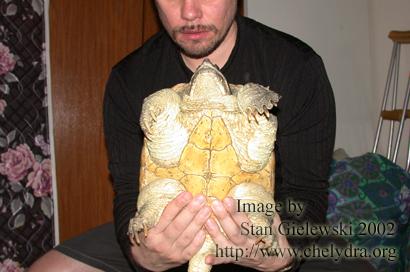
Large snappers can be also handled with both hands by the sides if it's shell - especially when you know the
turtle and the turtle knows you. It is sometimes the only way to handle large or very large wild snappers, especially the ones
covered with slippery algae. While handling them in such way it is important to not to carry them too high off the
ground. The snappers powerful legs might catch on your hands and the turtle easily will free itself from your grip falling
down, which if carried too high might injure it.
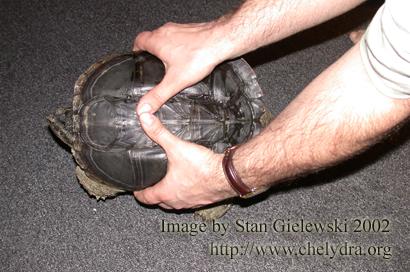 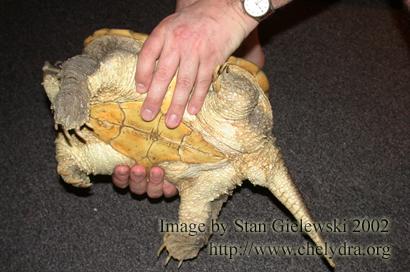
According to many sources, holding snappers by its tail is another safe method of
handling snapping turtles. Well, this might be right for the person - but not for the turtle.
I don't recommend handling snapping turtles of any sizes by its tail.
Using this method leads to some serious injuries of the turtles vertebra. And on the other hand,
while trying to escape, there is always the possibility of having the snapper turn around and... have a bite ! !
( the snapper in this picture was not actually picked up by it's tail but was resting on the carpet )
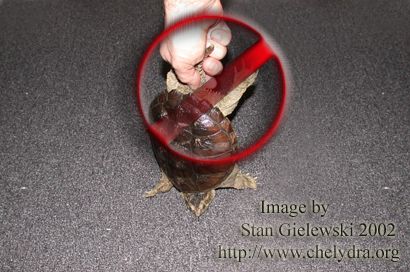
Alligator snapping turtles have much shorter necks and a different behavior when picked up. Unlike the common snappers they
don't 'snap' nor make any rapid moves. Instead, they stay quite calm with their mouths wide open turning their heads towards the intruder and closing their jaws
only when in direct reach of a part of the unfortunate handler. Their beaks are very hooked and sharp, and reaching much greater sizes than their cousins
the alligator snapper can inflict much more serious injury that a common snapping turtle. With their incredible strengh they are able to amputate a finger or even a limb.
Having their necks short and not being able to bite distant targets the alligator snapping turtles are quite safe to handle by holding them by the sides of the shell. When bigger
and heavier, the common practice is to hold the snapper by the upper edge of the carapace right behind it's head with one hand, and by the edge of the carapace in the back above the
base of the tail with the other hand.
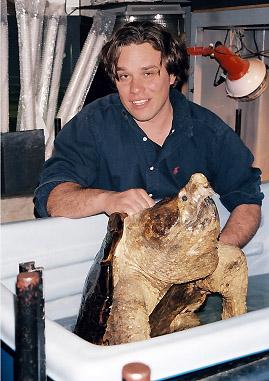
Again, just like with the common snapping turtles, the alligator snappers should not be picked up by their tails alone.
|